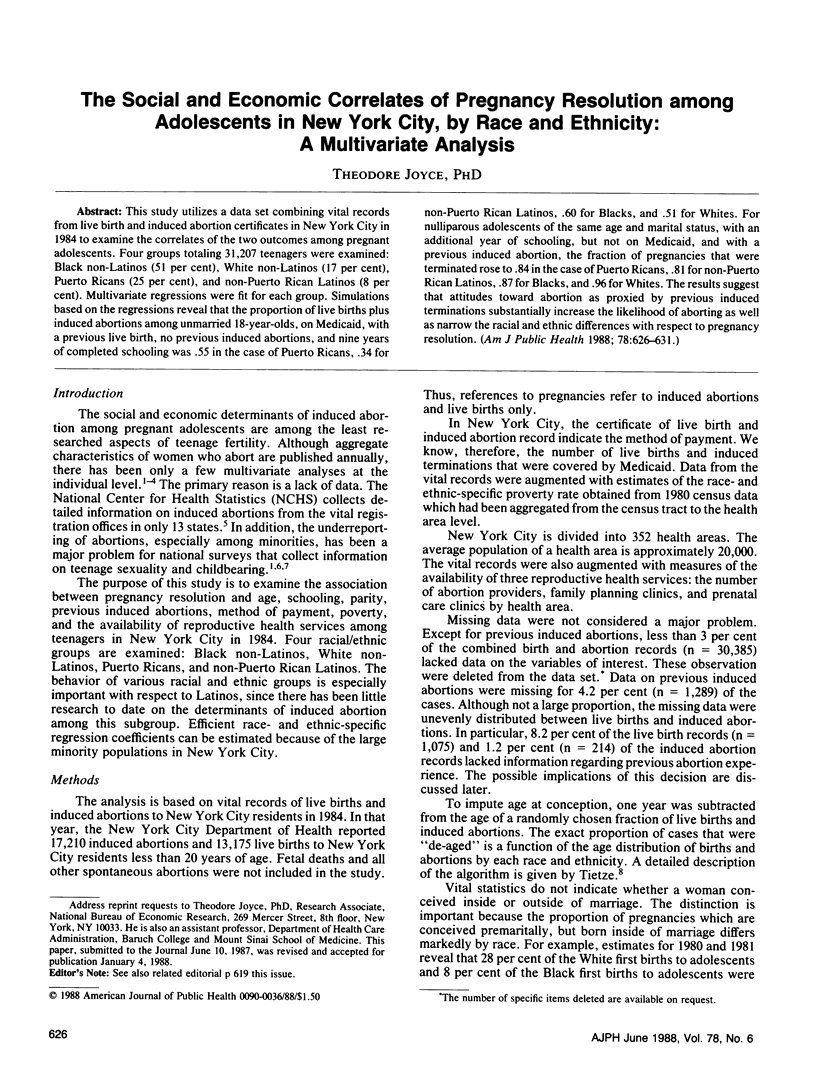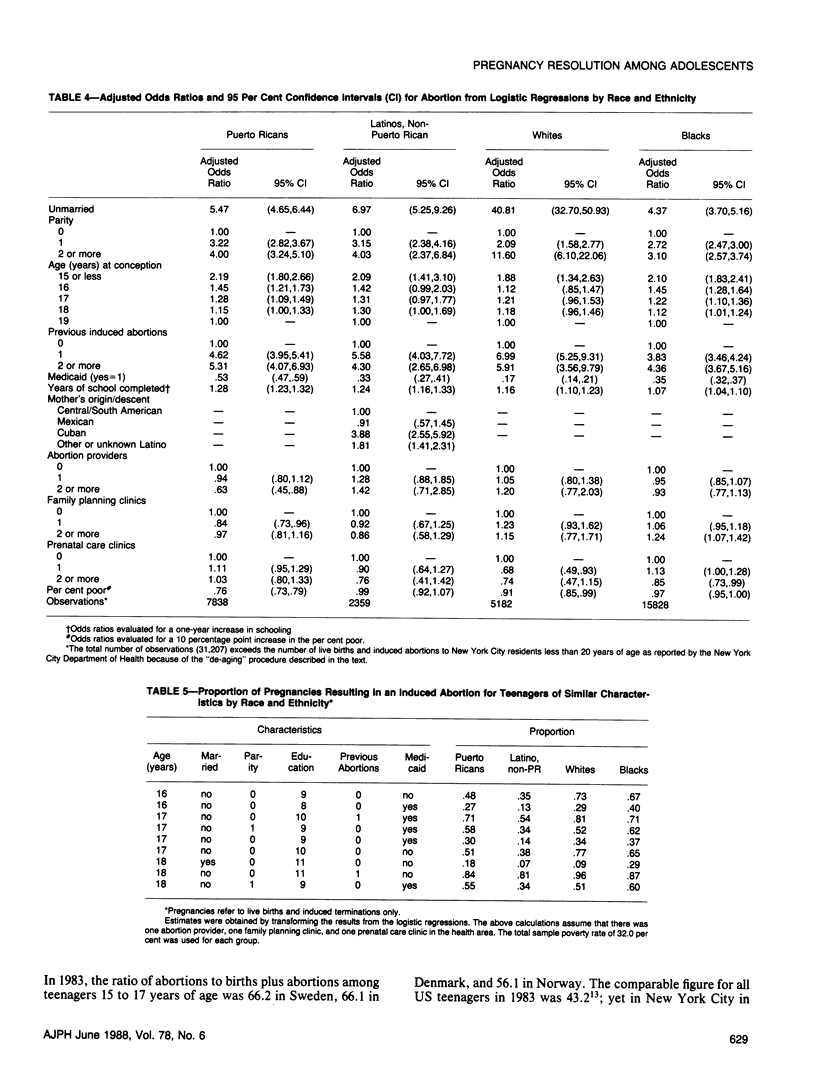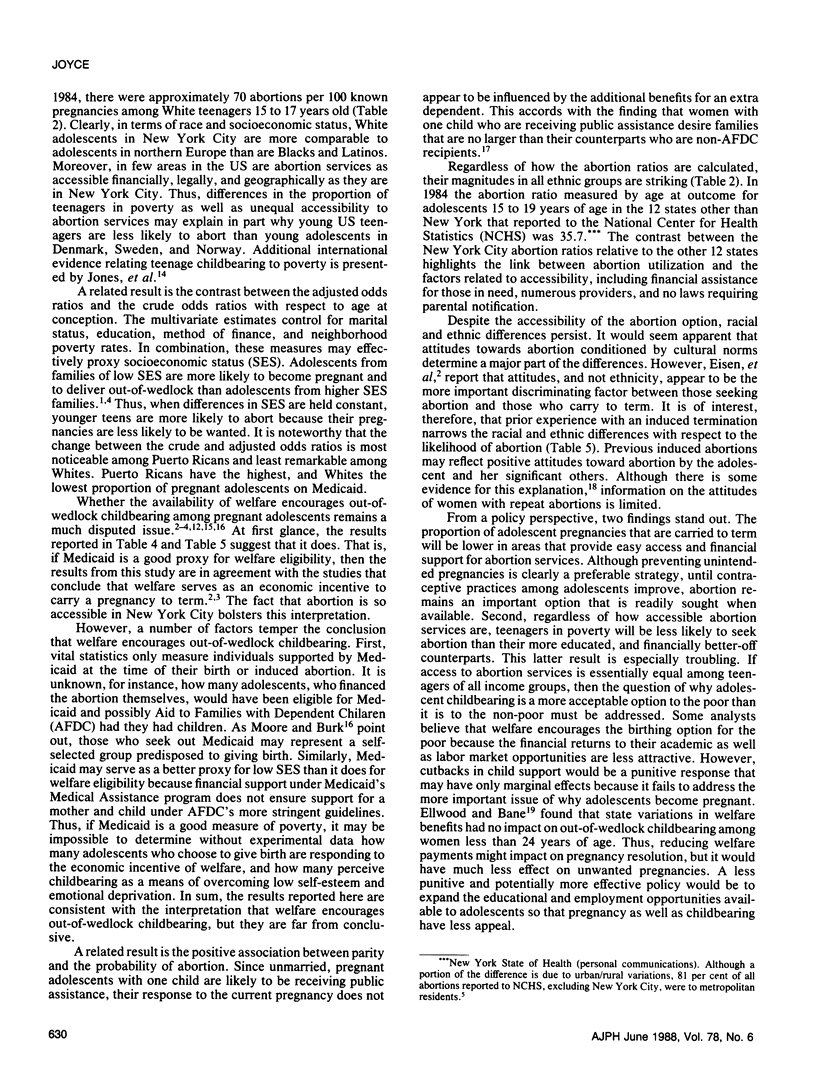Abstract
This study utilizes a data set combining vital records from live birth and induced abortion certificates in New York City in 1984 to examine the correlates of the two outcomes among pregnant adolescents. Four groups totaling 31,207 teenagers were examined: Black non-Latinos (51 per cent), White non-Latinos (17 per cent), Puerto Ricans (25 per cent), and non-Puerto Rican Latinos (8 per cent). Multivariate regressions were fit for each group. Simulations based on the regressions reveal that the proportion of live births plus induced abortions among unmarried 18-year-olds, on Medicaid, with a previous live birth, no previous induced abortions, and nine years of completed schooling was .55 in the case of Puerto Ricans, .34 for non-Puerto Rican Latinos, .60 for Blacks, and .51 for Whites. For nulliparous adolescents of the same age and marital status, with an additional year of schooling, but not on Medicaid, and with a previous induced abortion, the fraction of pregnancies that were terminated rose to .84 in the case of Puerto Ricans, .81 for non-Puerto Rican Latinos, .87 for Blacks, and .96 for Whites. The results suggest that attitudes toward abortion as proxied by previous induced terminations substantially increase the likelihood of aborting as well as narrow the racial and ethnic differences with respect to pregnancy resolution.
Full text
PDF





Selected References
These references are in PubMed. This may not be the complete list of references from this article.
- Bracken M. B., Klerman L. V., Bracken M. Abortion, adoption, or motherhood: an empirical study of decision-making during pregnancy. Am J Obstet Gynecol. 1978 Feb 1;130(3):251–262. [PubMed] [Google Scholar]
- Eisen M., Zellman G. L., Leibowitz A., Chow W. K., Evans J. R. Factors discriminating pregnancy resolution decisions of unmarried adolescents. Genet Psychol Monogr. 1983 Aug;108(1ST):69–95. [PubMed] [Google Scholar]
- Ezzard N. V., Cates W., Jr, Kramer D. G., Tietze C. Race-specific patterns of abortion use by American teenagers. Am J Public Health. 1982 Aug;72(8):809–814. doi: 10.2105/ajph.72.8.809. [DOI] [PMC free article] [PubMed] [Google Scholar]
- Henshaw S. K., Binkin N. J., Blaine E., Smith J. C. A portrait of American women who obtain abortions. Fam Plann Perspect. 1985 Mar-Apr;17(2):90–96. [PubMed] [Google Scholar]
- Jones E. F., Forrest J. D., Goldman N., Henshaw S. K., Lincoln R., Rosoff J. I., Westoff C. F., Wulf D. Teenage pregnancy in developed countries: determinants and policy implications. Fam Plann Perspect. 1985 Mar-Apr;17(2):53–63. [PubMed] [Google Scholar]
- Kramer M. J. Legal abortion among New York City residents: an analysis according to socioeconomic and demographic characteristics. Fam Plann Perspect. 1975 May-Jun;7(3):128–137. [PubMed] [Google Scholar]
- Leibowitz A., Eisen M., Chow W. K. An economic model of teenage pregnancy decision-making. Demography. 1986 Feb;23(1):67–77. [PubMed] [Google Scholar]
- Moore K. A., Caldwell S. B. The effect of government policies on out-of-wedlock sex and pregnancy. Fam Plann Perspect. 1977 Jul-Aug;9(4):164–169. [PubMed] [Google Scholar]
- O'Connell M., Rogers C. C. Out-of-wedlock births, premarital pregnancies and their effect on family formation and dissolution. Fam Plann Perspect. 1984 Jul-Aug;16(4):157–162. [PubMed] [Google Scholar]


